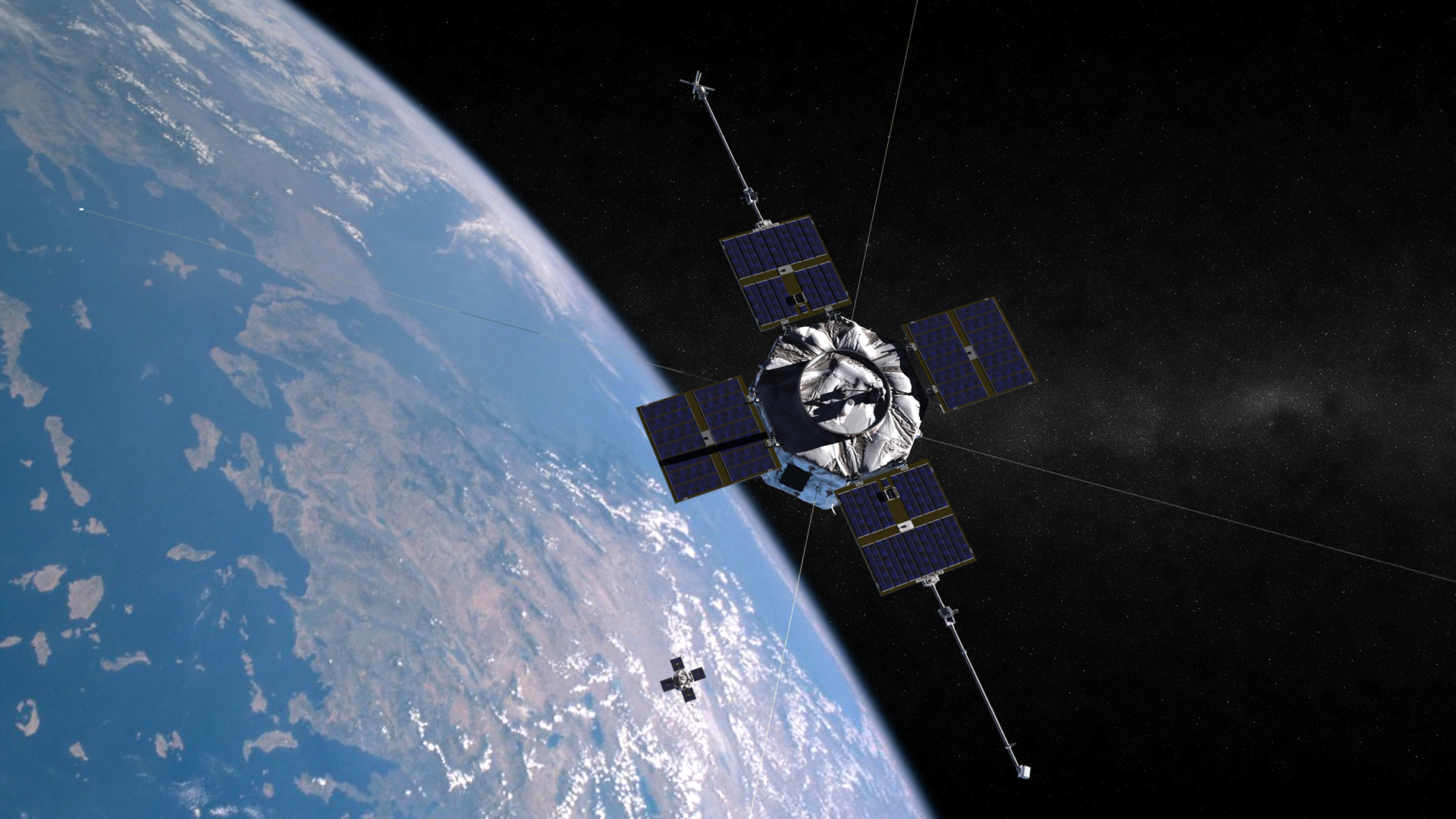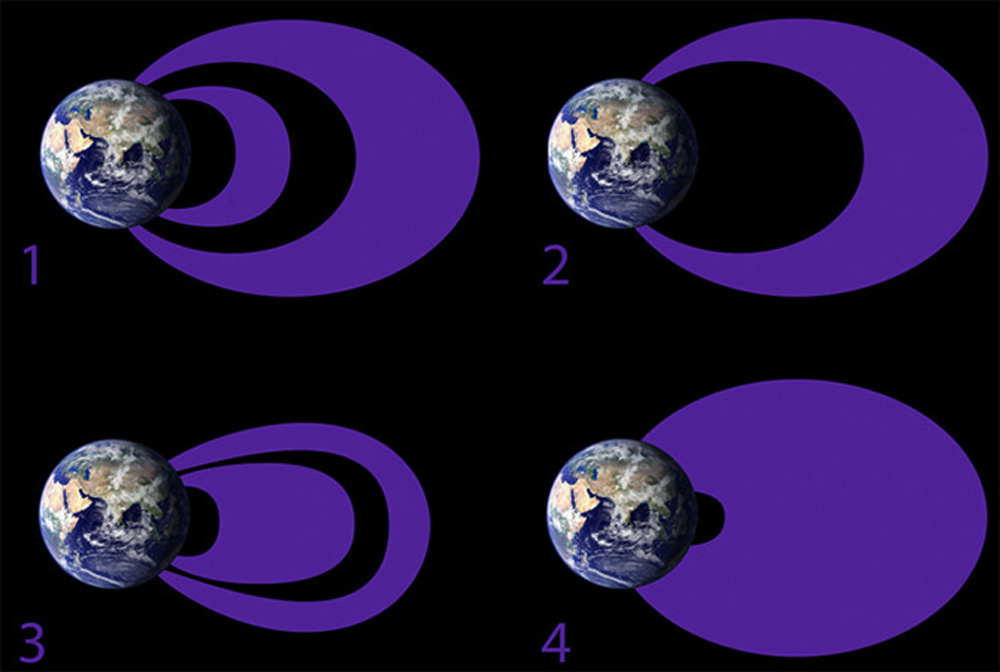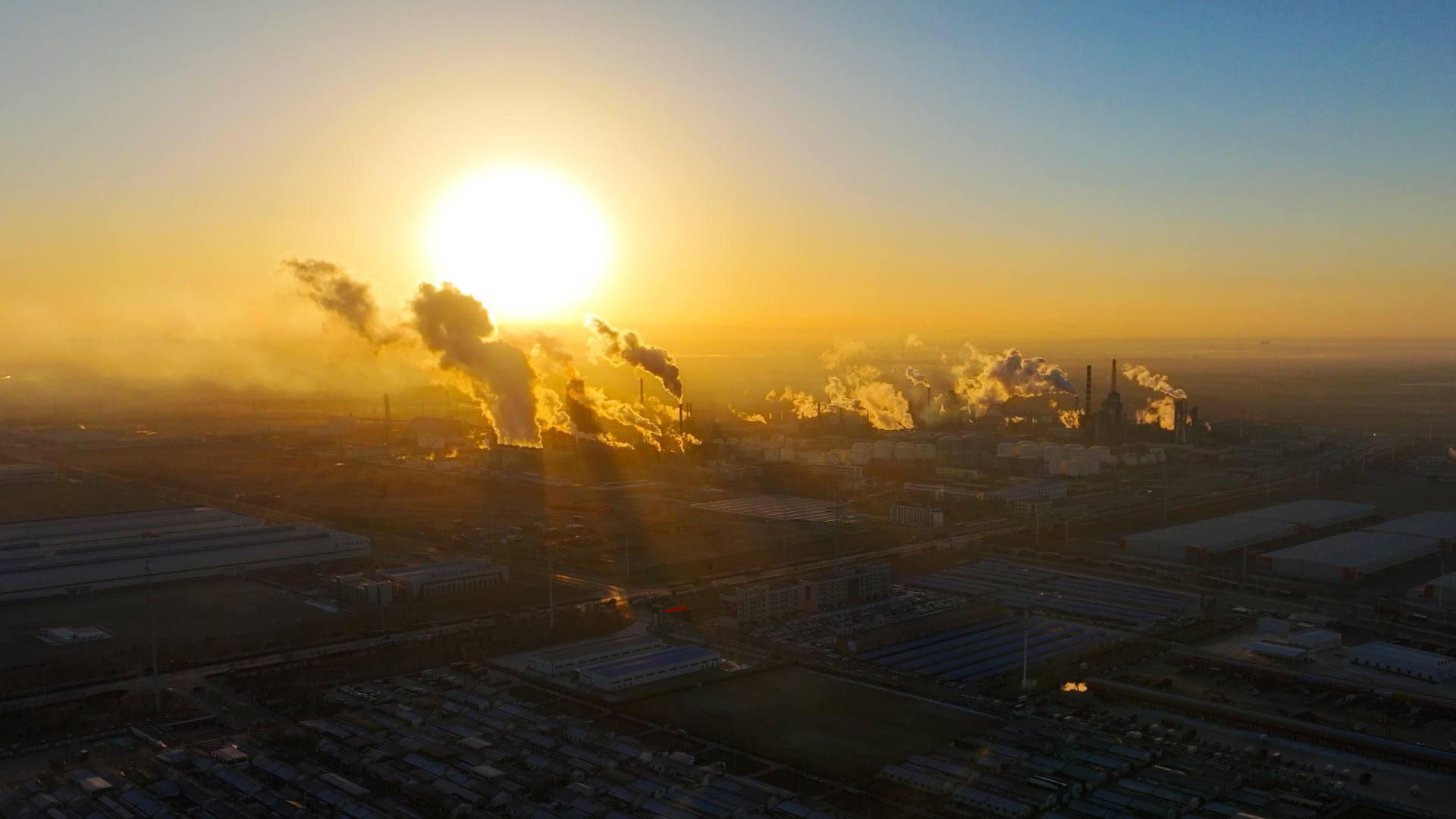Van Allen Radiation Belts: Facts & Findings

Giant donut-shaped swaths of magnetically trapped, highly energetic charged particles surround Earth. James Van Allen, a physicist at the University of Iowa, discovered these radiation belts in 1958 after the launch of Explorer 1, the first U.S. satellite. The radiation belts were eventually named after him.
Van Allen's experiment on Explorer 1, which launched Jan. 31, 1958, had a simple cosmic ray experiment consisting of a Geiger counter (a device that detects radiation) and a tape recorder. Follow-up experiments on three other missions in 1958 — Explorer 3, Explorer 4 and Pioneer 3 — established that there were two belts of radiation circling the Earth.
While observations have continued for decades, our knowledge of the belts became more enhanced when the Van Allen Probes launched in 2012. They found that the belts were more complex than previously imagined. The probes showed that the shape of the belts depends on what particle is being studied. They also uncovered information hinting there is less radiation than imagined in certain parts of the Van Allen belts, which means spacecraft and humans would not need as much radiation protection if they are voyaging in that region.
On the 60th anniversary of Explorer 1, NASA said that studies of the Van Allen belts are even more important today. "Our current technology is ever more susceptible to these accelerated particles because even a single hit from a particle can upset our ever smaller instruments and electronics," said David Sibeck, Van Allen Probes mission scientist at NASA's Goddard Space Flight Center in Maryland, in a 2018 statement. "As technology advances, it's actually becoming even more pressing to understand and predict our space environment."
Early probe findings
Part of the interest in the Van Allen belts comes from where they are located. It is known that the belts can swell when the sun becomes more active. Before the probes launched, scientists thought the inner belt was relatively stable, but when it did expand, its influence extended over the orbit of the International Space Station and several satellites. The outer belt fluctuated more often. The ISS has been permanently inhabited since 2000, with typical astronauts staying there for six months at a time. In 2015-16, NASA astronaut Scott Kelly and Russian cosmonaut Mikhail Kornienko remained there for almost a year. As astronauts stay in orbit for longer, their radiation exposure may also increase, leading to concerns about long-term habitation for astronauts in space.
So scientists are interested in close study of this region. In 2012, a new set of probes launched. The Van Allen Probes (formerly known as the Radiation Belt Storm probes) have several scientific goals, including discovering how the particles — ions and electrons — in the belts are accelerated and transported, how electrons are lost and how the belts change during geomagnetic storms. The mission was planned to last two years, but as of May 2018 the probes were still operating at more than double the expected mission lifetime. However, fuel reserves are running low and the probes will likely retire in the next couple of years.
Usually, scientists take a few months after launch to calibrate their instruments, but a team with the Relativistic Electron Proton Telescope asked that their instrument be turned on almost immediately (three days after launch); they wanted to compare observations before another mission, SAMPEX (Solar, Anomalous, and Magnetospheric Particle Explorer), de-orbited and entered Earth's atmosphere.
Breaking space news, the latest updates on rocket launches, skywatching events and more!
"It was a lucky decision," NASA said in February 2013, noting that a solar storm had already caused the radiation belts to swell as soon as the instrument was turned on. "Then something happened no one had ever seen before: the particles settled into a new configuration, showing an extra, third belt extending out into space," the agency added. "Within mere days of launch, the Van Allen Probes showed scientists something that would require rewriting textbooks."
Protective shield
Data gathered by the probes also showed that the radiation belts shield Earth from high-energy particles. "The barrier for the ultrafast electrons is a remarkable feature of the belts," study lead author Dan Baker, of the University of Colorado in Boulder, said in a statement.
"We're able to study it for the first time, because we never had such accurate measurements of these high-energy electrons before." [Gallery: NASA's Van Allen Probes]
This new information helped scientists model the belts' changes. But there was more information to come. In January 2016, scientists revealed that the shape of the belts depends on what type of electron is being studied. This means the two belts are much more complex; depending on what is being observed, they can be a single belt, two separate belts or just an outer belt (with no inner belt at all.)
"The researchers found that the inner belt — the smaller belt in the classic picture of the belts — is much larger than the outer belt when observing electrons with low energies, while the outer belt is larger when observing electrons at higher energies," NASA wrote at the time. "At the very highest energies, the inner belt structure is missing completely. So, depending on what one focuses on, the radiation belts can appear to have very different structures simultaneously."
What is still poorly understood, however, is what happens when particles from the sun hit the belts during a geomagnetic storm. It is known that the number of electrons in the belts changes, either decreasing or increasing depending on the situation. Also, the belts eventually return to their normal shape after the storm passes. NASA said it isn't clear what kind of storm will cause a specific type of belt configuration. Also, the agency noted, any previous observations were done only with electrons at a few energy levels. More work needs to be done.
Luckily, scientists got the chance to observe a storm up close in March 2015, when one of the Van Allen Probes happened to be situated inside the "right" spot in Earth's magnetic field to see an interplanetary shock. NASA describes such shocks as similar to when a tsunami is triggered by an earthquake; in this case, a coronal mass ejection of charged particles from the sun creates a shock in specific areas of the belts.
"The spacecraft measured a sudden pulse of electrons energized to extreme speeds — nearly as fast as the speed of light — as the shock slammed the outer radiation belt," NASA wrote at the time. "This population of electrons was short-lived, and their energy dissipated within minutes. But five days later, long after other processes from the storm had died down, the Van Allen Probes detected an increased number of even higher energy electrons. Such an increase so much later is a testament to the unique energization processes following the storm."
In 2017, the Washington Post published an article with some of the sounds of space recorded from an instrument on the Van Allen Probes, called Electric and Magnetic Field Instrument Suite and Integrated Science (EMFISIS). Although humans cannot hear these sounds — because there is no medium in which the waves can carry the sound — translating this data was fairly straightforward, the Post wrote. "The electromagnetic waves are in the same frequency range as the part of the sound spectrum that is audible to humans. It was a simple matter to translate those radio waves as MP3s — turning EMFISIS data into a radio broadcast from the heavens."
Designing better spacecraft
The Van Allen Probes are specially hardened to withstand the intense radioactive environment of the belts. Some spacecraft, however, are more vulnerable — especially when a solar storm hits. At worst, spacecraft can short out due to an electrical overload. Communications can also be disrupted. Fortunately, sometimes instruments can be turned on or off on a spacecraft during a solar storm.
Radiation, of course, also poses a human risk. Astronauts are subject to lifetime radiation limits from their time in space, to reduce any risk of cancer. Since only a few dozen people have spent six months or longer in space, however, it will take decades to understand the long-term effects of radiation on humans.
The astronauts on the ISS do not regularly spend time inside the belts, but from time to time solar storms expand the belts to the orbit of the space station. In the 1960s, several Apollo crews went through the Van Allen belts on their way to and from the moon. Their time in that radiation-intensive region, however, was very short, in part because the trajectory was designed to pass through the thinnest known parts. With more study, astronauts can be better protected for long-term stays in Earth orbit.
"We study radiation belts because they pose a hazard to spacecraft and astronauts," said David Sibeck, the Van Allen Probes mission scientist at NASA's Goddard Space Flight Center in Maryland, in an August 2016 NASA statement. "If you knew how bad the radiation could get, you would build a better spacecraft to accommodate that."
Newer findings from the probes show that radiation in certain zones may be less harsh than scientists thought. In March 2017, the Van Allen Probes made a finding showing there is less radiation in the inner belts that previously theorized, which means less shielding is required for spacecraft and satellites in that region. The most energetic electrons residing in the inner radiation belt are there for less time than scientists thought beforehand.
The following year, the probes discovered that some communications wavelengths (called very low frequency communications) emanating from Earth are sometimes a sort of a shield against high-energy particle radiation in space. This means that human activity has effects even in the near-space environment around Earth.
As of 2018, the Van Allen Probes are running low on fuel and are expected to finish their mission around 2020. Goddard is working on a CubeSat (small spacecraft) mission called GTOSat that will continue studying the Van Allen belts.
"This mission of firsts will serve as a pathfinder for new radiation-tolerant technologies that could help scientists realize a long-sought dream: deploying a constellation of small satellites beyond low-Earth orbit to gather simultaneous, multi-point measurements of Earth's ever-changing magnetosphere, which protects the planet from the constant assault of charged particles streaming off the sun," NASA said in May 2018.

Elizabeth Howell (she/her), Ph.D., was a staff writer in the spaceflight channel between 2022 and 2024 specializing in Canadian space news. She was contributing writer for Space.com for 10 years from 2012 to 2024. Elizabeth's reporting includes multiple exclusives with the White House, leading world coverage about a lost-and-found space tomato on the International Space Station, witnessing five human spaceflight launches on two continents, flying parabolic, working inside a spacesuit, and participating in a simulated Mars mission. Her latest book, "Why Am I Taller?" (ECW Press, 2022) is co-written with astronaut Dave Williams.


